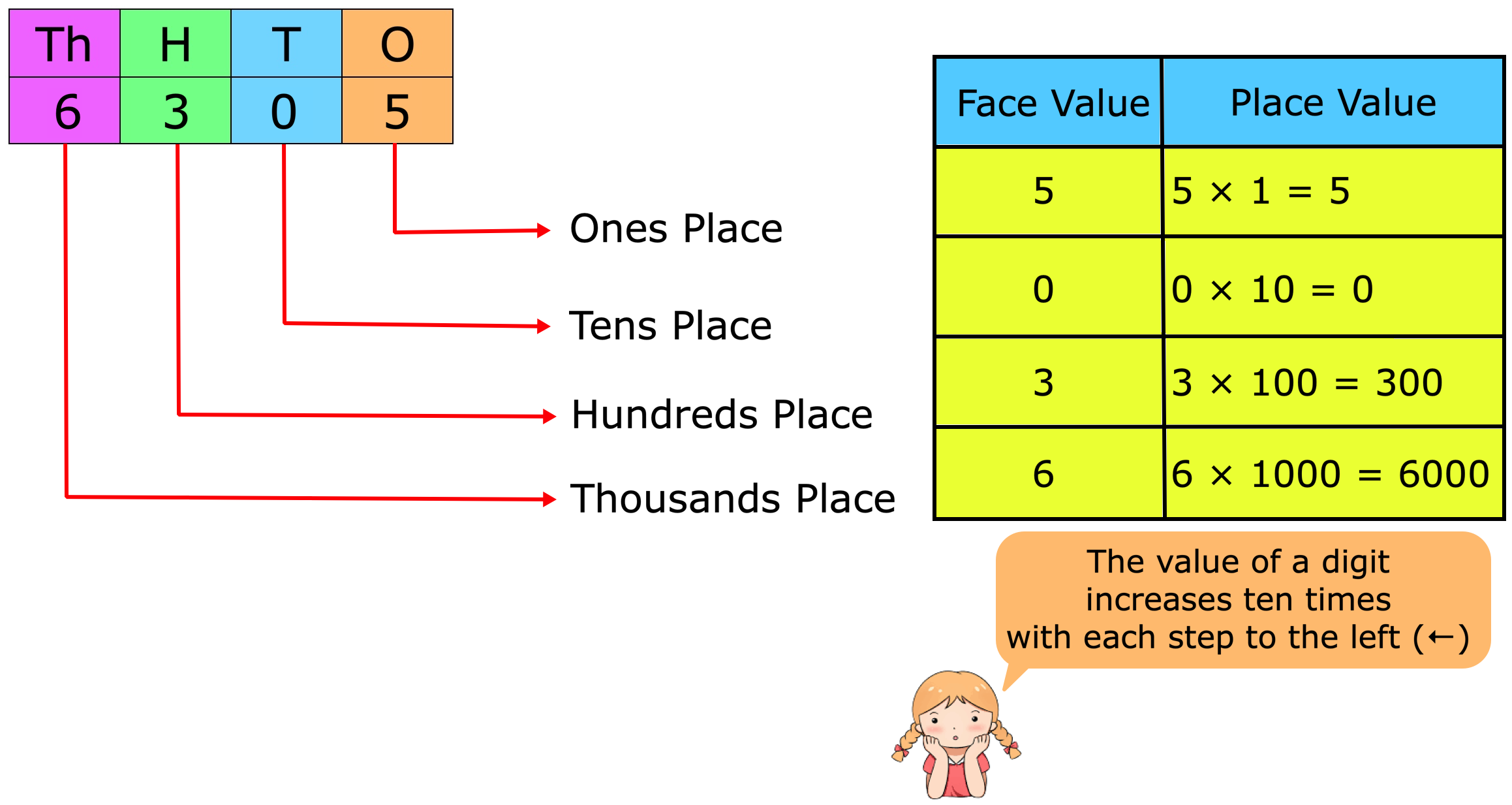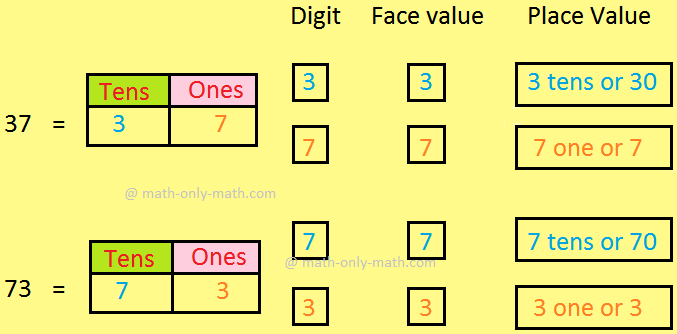General Form and General Term of a Geometric Progression
We will discuss here about the general form and general term of a Geometric Progression.
The general form of a Geometric Progression is {a, ar, ar2, ar3, ar4, ............}, where ‘a’ and ‘r’ are called the first term and common ratio (abbreviated as C.R.) of the Geometric Progression.
The nth or general term of a Geometric Progression
To prove that the general term or nth term of a Geometric Progression with first term ‘a’ and common ratio ‘r’ is given by tn = a ∙ rn−1
Proof:
Let us assume that t1, t2, t3, t4, ................., tn, ............... be the given Geometric Progression with common ratio r. Then t1 = a ⇒ t1 = ar1−1
Since t1, t2, t3, t4, ................., tn, ............... is a Geometric
Progression with common ratio r, therefore
t2t1 = r ⇒ t2 = t1r ⇒ t2 = ar ⇒ t2 = ar2−1
t3t2 = r ⇒ t3 = t2r ⇒ t3 = (ar)r ⇒ t3 = ar2 = t3 = ar3−1
t4t3 = r ⇒ t4 = t3r ⇒ t4 = (ar2)r ⇒ t4 = ar3 = t4 = ar4−1
t5t4 = r ⇒ t5 = t4r ⇒ t5 = (ar3)r ⇒ t5 = ar4 = t5 = ar5−1
Therefore, in general, we have, tn = arn−1.
Alternate method to find the nth term of a Geometric Progression:
To find the nth term or general term of a Geometric Progression, let us assume that a, ar, ar2, ar3, a4, .......... be the given Geometric Progression, where ‘a’ is the first term and ‘r’ is the common ratio.
Now form the Geometric Progression a, ar, ar2, ar3, a4, ......... we have,
Second term = a ∙ r = a ∙ r2−1 = First term × (Common ratio)2−1
Third term = a ∙ r2 = a ∙ r3−1 = First term × (Common ratio)3−1
Fourth term = a ∙ r3 = a ∙ r4−1= First term × (Common ratio)4−1
Fifth term = a ∙ r4 = a ∙ r5−1 = First term × (Common ratio)5−1
Continuing in this manner, we get
nth term = First term × (Common ratio)n−1 = a ∙ rn−1
⇒ tn = a ∙ rn−1, [tn = nth term of the G.P. {a, ar, ar2, ar3, ar4, ..........}]
Therefore, the nth term of the Geometric Progression {a, ar, ar2, ar3, .......} is tn = a ∙ rn−1
Notes:
(i) From the above discussion we understand that if ‘a’ and ‘r’ are the first term and common ratio of a Geometric Progression respectively, then the Geometric Progression can be written as
a, ar, ar2, ar3, ar4, ................, arn−1 as it is finite
or,
ar, ar2, ar3, ar4, ................, arn−1, ................ as it is infinite.
(ii) If first term and common ratio of a Geometric Progression are given, then we can determine its any term.
How to find the nth term from the end of a finite Geometric Progression?
Prove that if ‘a’ and ‘r’ are the first term and common ratio of a finite Geometric Progression respectively consisting of m terms then, the nth term from the end is arm−n.
Proof:
The Geometric Progression consists of m terms.
Therefore, nth term from the end of the Geometric Progression = (m - n + 1)th term from the beginning of the Geometric Progression = arm−n
Prove that if ‘l’ and ‘r’ are the last term and common ratio of a Geometric Progression respectively then, the nth term from the end is l(1r)n−1.
Proof:
From the last term when we move towards the beginning of a Geometric Progression we find that the progression is a Geometric Progression with common ratio 1/r. Therefore, the nth term from the end = l(1r)n−1.
Solved examples on general term of a Geometric Progression
1. Find the 15th term of the Geometric Progression {3, 12, 48, 192, 768, ..............}.
Solution:
The given Geometric Progression is {3, 12, 48, 192, 768, ..............}.
For the given Geometric Progression we have,
First term of the Geometric Progression = a = 3
Common ratio of the Geometric Progression = r = 123 = 4.
Therefore, the required 15th term = t15 = a ∙ rn−1 = 3 ∙ 415−1 = 3 ∙ 414 = 805306368.
2. Find the 10th term and the general term of the progression {14, -12, 1, -2, ...............}.
Solution:
The given Geometric Progression is {14, -12, 1, -2, ...............}.
For the given Geometric Progression we have,
First term of the Geometric Progression = a = 14
Common ratio of the Geometric Progression = r = −1214 = -2.
Therefore, the required 10th term = t10 = ar10−1 = 14(-2)9 = -128, and, general term, tn = arn−1 = 14(-2)n−1 = (-1)n−12n−3
● Geometric Progression
- Definition of Geometric Progression
- General Form and General Term of a Geometric Progression
- Sum of n terms of a Geometric Progression
- Definition of Geometric Mean
- Position of a term in a Geometric Progression
- Selection of Terms in Geometric Progression
- Sum of an infinite Geometric Progression
- Geometric Progression Formulae
- Properties of Geometric Progression
- Relation between Arithmetic Means and Geometric Means
- Problems on Geometric Progression
11 and 12 Grade Math
From General Form and General Term of a Geometric Progression to HOME PAGE
Didn't find what you were looking for? Or want to know more information about Math Only Math. Use this Google Search to find what you need.
Recent Articles
-
Place Value and Face Value | Place and Face Value of Larger Number
Apr 13, 25 03:12 PM
The place value of a digit in a number is the value it holds to be at the place in the number. We know about the place value and face value of a digit and we will learn about it in details. We know th… -
Face Value and Place Value|Difference Between Place Value & Face Value
Apr 13, 25 03:07 PM
What is the difference between face value and place value of digits? Before we proceed to face value and place value let us recall the expanded form of a number. The face value of a digit is the digit… -
Place Value and Face Value | Basic Concept on Place Value | Face Value
Apr 13, 25 02:59 PM
Learn the easiest way to understand the basic concept on place value and face value in the second grade. Suppose we write a number in figures 435 in words we write four hundred thirty five. -
Expressing Place Value and Face Value | International & Indian System
Apr 13, 25 02:35 PM
We will learn expressing place value and face value of a digit in any number in International and Indian system. Place value: We know how to find out the place value of a digit in any number. -
5th Grade Decimals | Word Problem on Decimals | Concept of Decimals
Apr 13, 25 02:16 PM
A fractional number whose denominator is 10 or multiple of 10 is called a decimal. Every decimal has two parts whole number part and decimal part. These two parts are separated by a dot or point. This…





New! Comments
Have your say about what you just read! Leave me a comment in the box below. Ask a Question or Answer a Question.